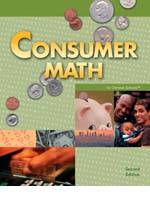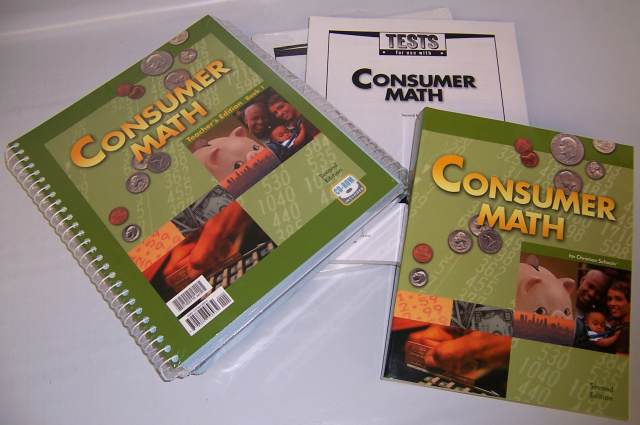Listed as an alternative to be used for any level of high school, BJU Press's Consumer Math will probably work best for students who have had at least an introduction to algebra, possibly within a prealgebra course.
The first chapter reviews math skills essential for consumer math: rates, ratios, percentage, basic operations, simple algebra, equations, formulas, and exponents. The second chapter covers systems of measurement and conversions plus computation of area and volume. Remaining chapters deal with very practical consumer math topics: income, budgeting, personal banking, borrowing, car-related money issues, food purchases, clothing (purchasing, sales and discounts, making, marketing), buying or renting a home, home maintenance financial costs, life and health insurance, income taxes, and vacations.
This text provides a general review of math and basic algebra (covered in pre-algebra courses) in addition to practical life applications of mathematics such as doing taxes, budgeting, buying a house, etc.
At almost 600 pages, this textbook really does a comprehensive job on consumer math. The math itself is challenging, showing clearly how some skills learned in algebra might be used. Students frequently use formulas, and they need a scientific calculator "with two storage locations" to use for some of the calculations.
This is definitely a Christian textbook. Each chapter opens by making some sort of scriptural connection to the topic such as being a wise steward or giving to God. Other scriptural references are made within the chapters, although sometimes these seem a bit contrived or awkward in their placement within chapters.
Each chapter is divided into a number of lessons. Lessons begin with explanation and practical applications, then give examples of problem solving. Exercises follow. These are divided into four sections: A, B, C, and cumulative review. You might assign sections A, B, and/or C according to the abilities of your student; I would probably assign A and B to every student, but use section C with its more complex word problems more selectively. All students should complete the cumulative review in each lesson. Each unit ends with a lesson consisting of review problems. Answers to odd-numbered problems, including those in the reviews, are at the back of the student text. All answers are in the teacher edition.
The homeschool kit includes both teacher and student editions plus tests and answer key.










